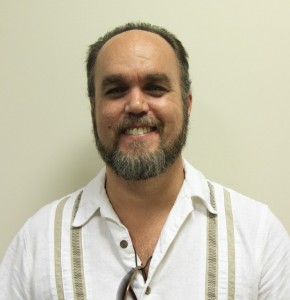 I was at the diversion center in Athens a few weeks ago talking with some of the residents about communication skills. We usually start with a general discussion, talking about our lives and struggles since the last time we met. In many ways their experience is similar to being in prison, and about half of them have been imprisoned sometime during their lives.
I was at the diversion center in Athens a few weeks ago talking with some of the residents about communication skills. We usually start with a general discussion, talking about our lives and struggles since the last time we met. In many ways their experience is similar to being in prison, and about half of them have been imprisoned sometime during their lives.
One of the guys asked me what I thought needed to happen in prisons. This is a subject close to my heart, and I talked about it for a bit, but then I stopped and said to them, “You can’t fix prisons.”
I have been thinking about my statement since then, and about how it applies to larger systems. There are, in fact, a lot of things that can’t be fixed, not because efforts at reform are ineffective, but because the basic concept is flawed. The concept of prison as it exists in our culture is beyond repair. It’s even worse when it is applied to children.
There are prisons for many reasons, and I am not suggesting we ignore those. Instead, I wonder if the focus is in the wrong place. I am reminded of a joke I have heard a few times. A policeman is making his rounds late at night and comes across a man under a streetlight. The man is searching the ground on his hands and knees.
When the policeman asks what he is looking for, the man answers, “My keys.” The policeman helps him for a few minutes, then asks, “Where were you when you dropped them?” The man points into the darkness and says, “Over there, near my car.” “Why are you looking for them here?” the policeman asks with exasperation. “The light is better.”
One of the ways I keep up with juvenile justice issues is through email alerts. Every day I get stories from around the world about what people are doing to deal with kids. As you can imagine, strategies and concerns run the gamut. Some say we are too soft, some too hard. Changes in either direction can be driven by money or idealism. Sometimes the lack of money leads to a change in philosophy.
All of these miss the mark though. Consider just our own nation. Black, Latino, and Native American youth are all overrepresented in contact with courts and incarceration. A survey of residential placements by the Office of Juvenile Justice and Delinquency Prevention shows that 70,792 youth were incarcerated in 2010. Of those, 22,947 were white; 28,976 black; 15,590 Hispanic; and 1,236 American Indian. According to 2012 estimates by the U.S. Census Bureau, whites make up 78.1 percent of the population, Latinos 16.7, blacks 13.1 percent, and Native Americans 1.2 percent.
I am no mathematician, but it doesn’t take much to see that these numbers are skewed. More than half of incarcerated young people are black, yet blacks make up 13 percent of the population. What is going on here? It could be several things I suppose, but in my mind it represents the racism that is inherent in our society, and that manifests itself not only in disproportionate contact with police but also in longer and harsher sentences for crimes. This is only one example. We could equally look at class, income levels, mental illness, foster home placement, abuse, or other markers and see a similar skew of the numbers.
These things are not as easy to talk about, and often end up ignored or marginalized in discussions about justice issues. The problem is that juvenile justice is tied up with social and economic justice, and all the wishing in the world won’t change that. Until we face up to that fact we are looking for our keys under the streetlight.